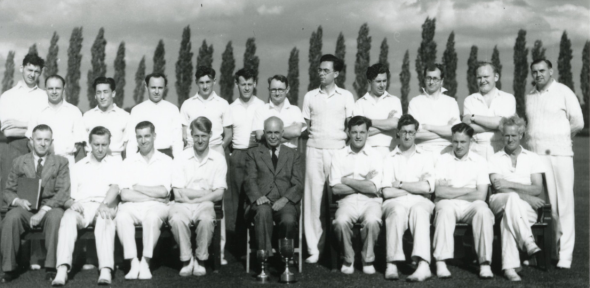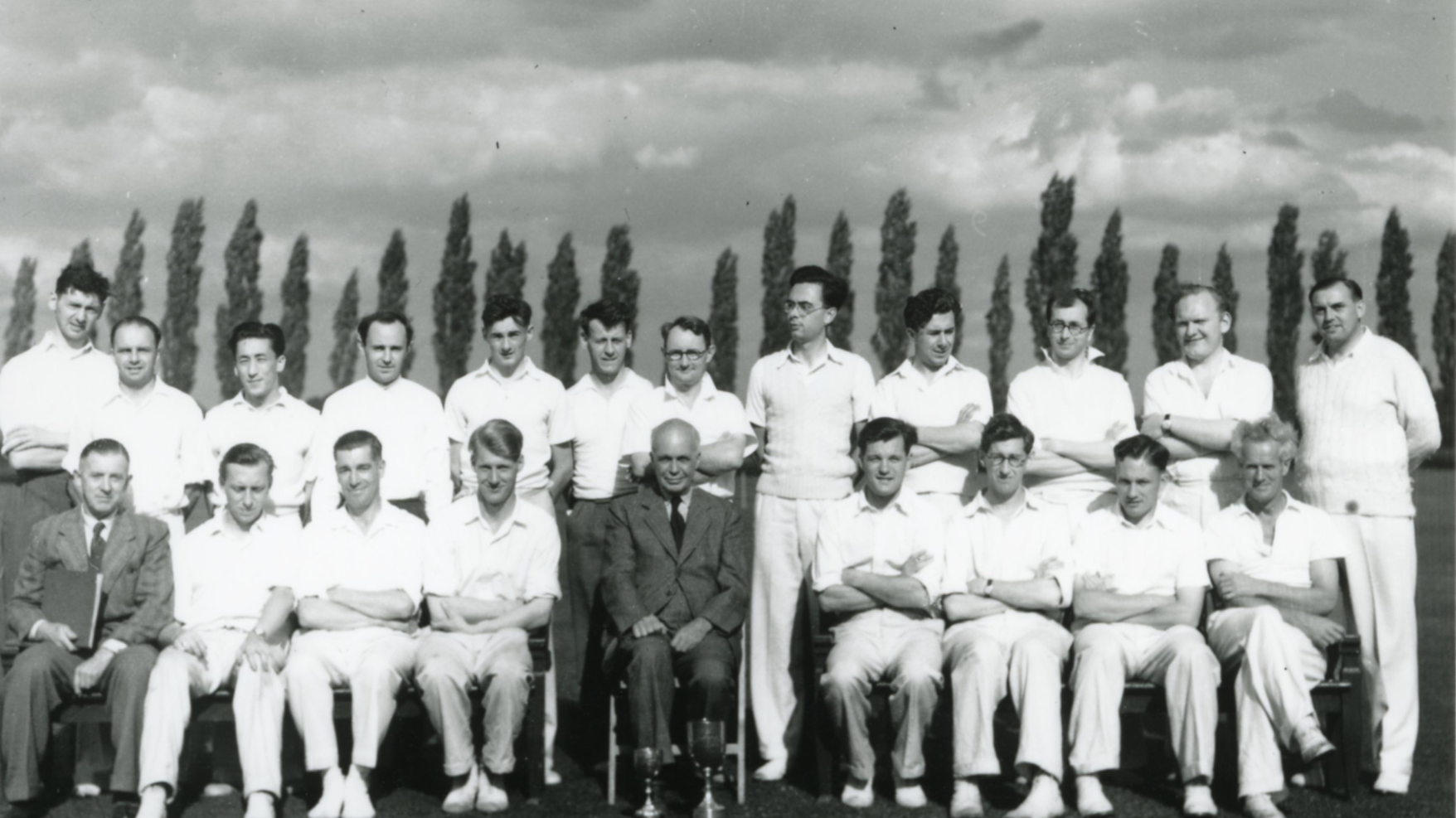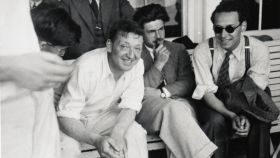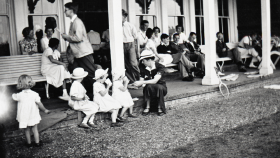
#AnniversaryStory
HOWZATTTT!
It’s another day and the Cavendish is not out* of sports to talk about! Today, we look at the rich history of cricket being played by the Cavendish Laboratory, Cambridge. You’re in luck because cricket is the most well-documented sport that the Cavendish played!
E. Rutherford and J.J. Thomson at the annual cricket match, 1936
We first start back in 1936. The world of nuclear physics has been opened-up by Rutherford’s Cavendish. With the structure of the atom uncovered, due to the discovery of the neutron at the Cavendish and the first artificial nuclear disintegration by Cockcroft and Walton in 1932, there’s no better way to blow off some steam than hitting sixes against Nobel prize-winning bowlers. Here we see Ernest Rutherford (left) alongside J.J Thomson (right) in front of the annual Cavendish cricket match. Both Cavendish Professors of Physics (effectively Heads of the Cavendish), Nobel Laureates, and discoverers of different subatomic particles, they are some of the most recognised scientists in the world- not just because of their fancy hats.
Team returning to the pavilion after the annual cricket match, 1939 Next, we move onto 1939. This period is a significant time of change. Rutherford passed away in 1937, and WL Bragg took up his post. It was of course, also the beginning of WWII and Rutherford’s resistance to seeking the large funding needed for the next steps in nuclear physics meant many of the brightest nuclear physicists in the Cavendish had already moved to other research groups to continue their work. Bragg, being one of the forefathers of crystallography, led the department away from nuclear physics towards crystallography. It was in 1939 that Perutz was working on the structure of haemoglobin, Hodgkin on the structure of insulin and both ended up with Nobel Prizes in Chemistry after their decades of analysis. This picture marks the annual cricket match of 1939 and it shows that despite all this change, there was still a community spirit alive in the Cavendish.
After the war, we see the return of the annual cricket matches. However, it’s in 1953 that we see an iconic photo. WL Bragg’s last Annual cricket match, before he moved on to the Royal Institution in 1954. It marks the end of a monumental era. Bragg had done a lot for the Cavendish and oversaw many discoveries within the department. He also managed to do this in arguably the toughest period in history, dealing with both the economic difficulties and the physical strain of the war. He had converted the Cavendish from an organisation supporting the war efforts back to a physics department.
Group photograph of the cricket team with Sir Lawrence Bragg, 1953 The following excerpt perfectly summarises Bragg’s contributions: “By the time of his departure, the structure of DNA had been solved by Crick and Watson, radio astronomy under Ryle was already making a major international impact, low-temperature physics was at the forefront of research internationally and electron microscopy was adding completely new dimensions to studies in condensed matter physics,” said Emeritus Jacksonian Professor Malcolm Longair.
Nowadays, cricket is still played every summer at the Cavendish! As Richard King, Undergraduate Laboratory manager, relates to us, “Nowadays, we play a number of friendlies, T20 matches on weekday evenings and in the inter-department league, but I never would have imagined we had such a rich history of cricket in the past!”
It’s great to see that the Cavendish haven’t lost the spirit of fun and community. “Our main aim is always to have an enjoyable match and to share the magic of this odd and quirky game with others,” said King. Hopefully, this tradition will continue into the next generation of the Cavendish.
|
Richard king (left standing), Niall Taylor (left sitting) and the cricket team, 2018 |
Richard King (rightmost) and the cricket team, 2014 |
As you can see, cricket has provided a rich platform for the community of the Cavendish to come together, offering a moment of respite and unity amidst their rigorous scientific endeavours. Whether it was Rutherford and Thomson taking a break from unravelling the mysteries of the atom, or Bragg guiding his team through the transformative post-war years, cricket was more than just a game. It was a symbol of continuity and camaraderie, bridging the gap between different eras of scientific discovery and connecting generations of physicists. In every swing of the bat and every cheer from the sidelines, the annual cricket matches embodied the spirit of collaboration and support that has always been at the heart of the Cavendish Laboratory. So, HOWZATTTT for cricket’s role in the Cavendish!
As a bonus have a look at some of these photos. The first one is Noble Laureate J.D Cockcroft smiling in 1939 in his cricket whites. The other three show the spectators at that same match. Note the diversity in age- it really shows how cricket was as much a family social occasion as a sport.
|
Wooster, Cockcroft, Wells and Goldhaber 1939 |
Spectators at the 1939 annual cricket match |
|
Spectators at the 1939 annual cricket match |
Spectators at the 1939 annual cricket match |
Main Image: Group photograph of the cricket team with Sir Lawrence Bragg, 1953
Text: Dhruv Shenai
Keep the tradition alive by being part of the current Cavendish cricket team. You can signup here or email Gaurav Kumar (HEP group) to know more.









